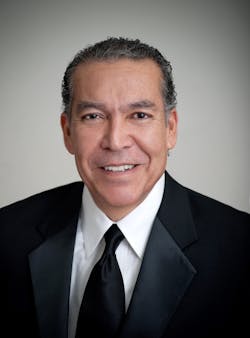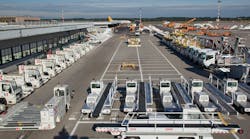Airlines have evolved over the past 70 years from simple mail carriers into sophisticated, competitive and dynamic business models. In the past decade, mega-mergers reduced nine U.S. airlines to four dominant airlines: Southwest, American, Delta and United. Those airlines control more than 80 percent of the U.S. market and operate more than 3,500 flights per day with 700 or more aircraft nationally. In 2016, the net profit for Southwest was $2.2 billion, American earned $2.7 billion, Delta earned $4.4 billion and United earned $2.3 billion. Many of these airline profits likely are targeted for new aircraft purchases and programs to update airport facilities.
In the face of fierce U.S. competition, airlines currently are investing in expanding and renovating their own terminals. Airlines typically will agree to long-term leases and sometimes invest their own capital funds for exclusive use and control of their terminals .
For the airport operator, handing over a difficult, multi-phased development program that affects the passenger experience can be a win-win proposition.
However, airlines and airport operators are not always aligned. As International Air Transport Association states, “Master Plans should be based on common airline and airport business development strategies.”
For commercial airports, the financial and operational relationship between the operator and airline is defined by a use and lease agreement defining how risks and responsibilities of running the airport are shared. Many times, this agreement includes the airline’s rights to approve or disapprove any major proposed airport capital development programs, giving airlines a significant measure of control over airport investment decisions.
Today, airlines need to be flexible and nimble in the way they adapt to the fast-changing business environment. They strive to be the best in customer service; best ‘on-time’ airline; best in handling bags; all with the objective of optimizing profit-generating capabilities while ensuring the lowest possible costs, highest revenue and to be the most cost-effective airline.
Airlines plan schedules six months in advance. So, what is one of the greatest delays in executing their plan? Failure to deliver facility expansion programs that allow growth or strategy plans to be executed in a timely manner.
At Los Angeles International Airport, competition between the four dominant airlines is fierce. Delta and American are building international gateways to complete with United’s lucrative hub at San Francisco International Airport. In 2016, Delta announced a $1.9 billion LAX facilities program to upgrade, co-locate with their partners and connect Terminals 2 and 3. Similarly, United with 22 gates in Terminals 7 and 8, is spending more than $500 million to upgrade its facilities and frequent-flier clubs.
In turn, LAX is building a new 11-gate Midfield Satellite Concourse connecting to the Tom Bradley International Terminal. Southwest also has been busy with a modernization program, spending $401 million in Terminal 1. So, in LAX the four airlines, along with the operator, are putting resources into planning, preparing, communicating and executing expansion programs as flawlessly as possible. This is an example of great partnering and coordination between the airlines and airport operator to build a shared future.
With all the planned expansion and modernization currently underway, here are three reasons why airlines are wise to lead airport development.
1. Airlines control of development costs
As large-scale airport development programs are envisioned, airlines evaluate the need for this new program and assess probable escalation of their operating costs. Airlines always are balancing profitability, and when profit is marginalized, they may begin to steer away. Or, they may prefer to assist to help right-size the growth where both airline and airport can realize a common ground in growth, strategy and profit.
2. Speed to market
Most growth development programs, desired by the airlines, stem from competitive advantages to secure and grow markets. These programs likely will aim to add gates to drive revenue and passenger traffic. To that end, one way to forge a clear path is to command the cost and the delivery of that program. Airlines easily can allocate funding and resources to quickly plan and build to their needs. Within a few years, airlines can execute a development program eliminating a long process of approvals, funding and procurement.
3. Capital programs burdened by politics
Many times, political agendas interfere with the airport’s desire to grow. One way to combat this is to have the airlines commit to the growth; socialize the program with the governing body; and, with public workshops, get the community involved with the growth benefits. This campaign should create a ‘team consensus’ that will sustain the program interests and successfully deliver a program that all stakeholders will be proud of.
Clearly, airports, airlines and passengers all benefit from airport enhancement and modernization programs. The most successful programs depend on airports and airlines working in close cooperation to execute these expansion programs as efficiently as possible for the benefit of all parties.
Enrique F. Mendez, AIA, serves as aviation project director–architecture and associate vice president for HNTB Corporation. Mendez has nearly 40 years of experience in professional design, construction, capital improvement and capital program management. His architectural expertise includes project and program development, team direction of corporate-private projects and stakeholder program objectives.


